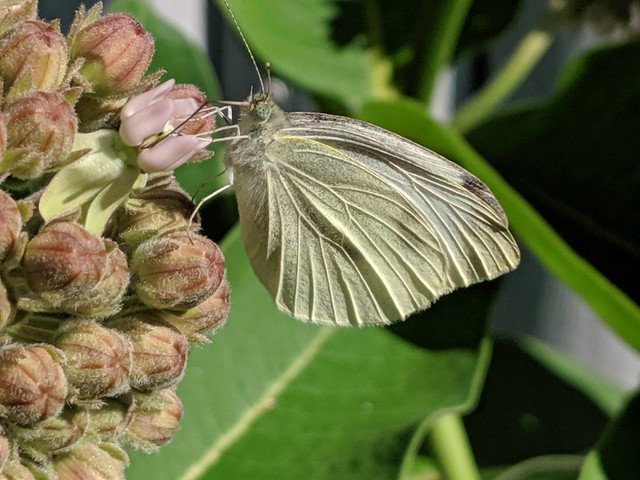
Merry May,
This month I've got four articles on freshwater, plus one on whether climate mitigation can be harmful to wildlife if done wrong (spoiler: yup).
If you know someone who wants to sign up to receive these summaries, they can do so at http://bit.ly/sciencejon (no need to email me).
FRESHWATER:
Petry et al. 2025 has predictions of changing streamflow and flooding across South America by 2100 under a moderate climate change scenario. Figure 4 has the key findings about how much more or less frequent floods may be. Note that “RP” means “return period” as in a “5 year flood” or “100 year flood” (the magnitude of flooding you’d expect on that frequency / rarity, so higher numbers mean more severe flooding). RPCF means how much more or less frequent those floods would be (with negative sign indicating less frequent flooding, e.g. the -2 on the Paraguay river in the Pantanal means half as often). But much more flooding is expected in Peru, Ecuador, Colombia, and Southern Brazil, and parts of the Amazon will see 1/10 as much flooding as they historically have. They find Pantanal floods (in the Paraguay River and some tributaries like Cuiaba and Negro) will be roughly half as frequent and half as severe, they don’t have a clear trend in the Chaco, and in Chile the area from roughly Santiago to Valdivia has some rivers where flooding will be ~2-3 times less frequent while the northern part of Chile will only see slightly less flooding.
Lehner et al. 2024 is a summary of a new "Global Dam Watch (GDW)" open dataset of 41,000 river barriers and 35,000 reservoirs (see Fig 1 for a map). While national and regional datasets are more complete (e.g., NID has 90k points in the US, AMBER has 630k in Europe), this is the most comprehensive free global dataset (see Table 2) and it includes estimated reservoir volumes mostly for reservoirs >10 km2.
Cho et al. 2023 did a ton of modeling (Fig 7) to estimate how conservation (mostly reforestation along streams) could have affected the water supply of São Paulo. They found the increased habitat could serve as an "invisible reservoir" for water in soil, and in a highly idealized scenario (lots of new forest in all the right places among others) streamflow could be boosted by 33% (and drought costs reduced by 28%). They don't report numeric results for their less ideal scenarios, and all scenarios exclude the water consumption of growing trees. In a conversation with one of the study's authors, they mentioned that it likely took about 30 years (I think) for the "water savings" of nature (fog capture plus slowing down runoff during high rain events) to outweigh the water consumption of growing trees. In other words, in this case in the short term adding trees could result in lower streamflow even though in the long run it would increase streamflow. Understanding the timeline and tradeoffs is key so people who live there know what to expect. From chatting w/ other hydrologists about this, it's clear that results like this vary a lot depending on things like soil type, weather and climate, type of forest, and much more. There's an article about this one at https://www.nature.org/en-us/about-us/where-we-work/latin-america/brazil/stories-in-brazil/invisible-reservoir/
Pompeu 2025 quantitatively models how different drivers have impacted total water surface area (as a decent proxy for total flow / water quantity) in the Pantanal. The paper found the biggest driver of water level was 1) the presence or absence of having natural vegetation at least 50m around springs, followed by 2) natural veg riparian buffers along rivers (buffer width increasing w/ river width as per the Forest Code), followed by 3) replacing conventional monoculture ag w/ something w/ deeper root systems (agroforestry, permaculture, full restoration if feasible, etc.), followed by 4) preventing more dams.
CLIMATE MITIGATION AND WILDLIFE:
Smith et al. 2025 asks what the net impact of climate mitigation on land (including bioenergy crops, reforestation, and afforestation) is on the total habitat area for 14,000 vertebrate species. Fig 1 summarizes the idea well - climate change can reduce suitable habitat, but climate mitigation can also either add or remove habitat directly. Fig 4 has their global recommendations - basically leave most ecosystems alone, reforest several areas (SE Asia, Eastern US, Mexico, and much of Europe) and in a few tiny places grow bioenergy crops. In other words, typically planting trees on grasslands or other habitat types destroys more habitat than it saves through climate mitigation. But planting trees in cleared forests is a win-win.
REFERENCES:
Cho, S. J., Klemz, C., Barreto, S., Raepple, J., Bracale, H., Acosta, E. A., Rogéliz-Prada, C. A., & Ciasca, B. S. (2023). Collaborative Watershed Modeling as Stakeholder Engagement Tool for Science-Based Water Policy Assessment in São Paulo, Brazil. Water, 15(3), 401. https://doi.org/10.3390/w15030401
Lehner, B., Beames, P., Mulligan, M., Zarfl, C., De Felice, L., van Soesbergen, A., Thieme, M., Garcia de Leaniz, C., Anand, M., Belletti, B., Brauman, K. A., Januchowski-Hartley, S. R., Lyon, K., Mandle, L., Mazany-Wright, N., Messager, M. L., Pavelsky, T., Pekel, J.-F., Wang, J., … Higgins, J. (2024). The Global Dam Watch database of river barrier and reservoir information for large-scale applications. Scientific Data, 11(1), 1069. https://doi.org/10.1038/s41597-024-03752-9
Petry, I., Miranda, P. T., Paiva, R. C. D., Collischonn, W., Fan, F. M., Fagundes, H. O., Araujo, A. A., & Souza, S. (2025). Changes in Flood Magnitude and Frequency Projected for Vulnerable Regions and Major Wetlands of South America. Geophysical Research Letters, 52(5). https://doi.org/10.1029/2024GL112436
Pompeu, J. (2025). Cross-Boundary Drivers of Water Cover Reduction in the Pantanal Wetland and Implications for its Conservation. Wetlands, 45(3), 32. https://doi.org/10.1007/s13157-025-01916-w
Smith, J. R., Beaury, E. M., Cook-Patton, S. C., & Levine, J. M. (2025). Variable impacts of land-based climate mitigation on habitat area for vertebrate diversity. Science, 387(6732), 420–425. https://doi.org/10.1126/science.adm9485
Sincerely,
Jon
p.s. This is a sea lion lazing about in Valdivia who happened to yawn as I was watching them.
